
A ghost town is an abandoned village, town, or city, usually one that contains substantial visible remains. A town often becomes a ghost town because the economic activity that supported it has failed, or due to natural or human-caused disasters such as floods, prolonged droughts, government actions, uncontrolled lawlessness, war, pollution, or nuclear disasters. The term can sometimes refer to cities, towns, and neighbourhoods that are still populated, but significantly less so than in past years; for example, those affected by high levels of unemployment and dereliction.

The Catacombs of Paris are underground ossuaries in Paris, France, which hold the remains of more than six million people in a small part of a tunnel network built to consolidate Paris' ancient stone mines. Extending south from the Barrière d'Enfer former city gate, this ossuary was created as part of the effort to eliminate the city's overflowing cemeteries. Preparation work began not long after a 1774 series of gruesome Saint Innocents-cemetery-quarter basement wall collapses added a sense of urgency to the cemetery-eliminating measure, and from 1786, nightly processions of covered wagons transferred remains from most of Paris' cemeteries to a mine shaft opened near the Rue de la Tombe-Issoire.

Tong is a ward within the City of Bradford Metropolitan District Council, West Yorkshire, England, named after Tong village which is its oldest settlement. The population at the 2011 Census was 20,608.
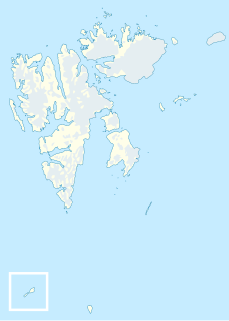
Sveagruva, or simply Svea, is a mining settlement in the Norwegian archipelago of Svalbard, lying at the head of Van Mijenfjord. It is the third largest settlement in the archipelago. Currently, around 300 workers living in Longyearbyen commute to Sveagruva for work on a daily or weekly basis. Sveagruva has no permanent inhabitants. The mine is operated by Store Norske Spitsbergen Kulkompani and is served by Svea Airport.

Sarcheshmeh (سرچشمه) or Sarcheshmeh Copper Complex is a large open cast copper mine in the Kerman Province of Iran, considered to be the second largest copper deposit worldwide. Also containing substantial amounts of molybdenum, gold and other rare metals. It is also a settlement, enumerated at Iranian census.
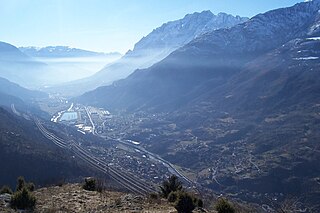
Sellero is a comune of 1,503 people in the province of Brescia in the middle Val Camonica.
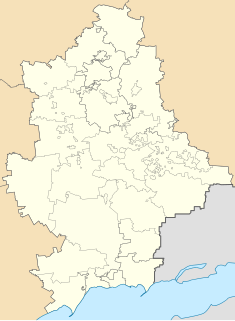
Yenakiieve, a city in the Donetsk Oblast (province) of eastern Ukraine, is incorporated as a city of oblast significance. The city stands on the Krynka River about 60 kilometres (37 mi) from the oblast's administrative center, Donetsk. Its population is approximately 79,348 (2017 est.).
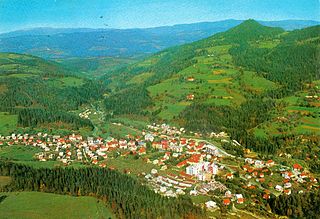
Mežica is a town and a municipality in northern Slovenia. It lies on the Meža River in the traditional Slovenian province of Carinthia) near the Austrian border. The town developed close to a lead and zinc mine under Mount Peca. Mining began in 1665 and ended in 1994. Today the mine is only open for tourist visits.
Cheshire is a county in North West England. Rock salt was laid down in this region some 220 million years ago, during the Triassic period. Seawater moved inland from an open sea, creating a chain of shallow salt marshes across what is today the Cheshire basin. As the marshes evaporated, deep deposits of rock salt were formed.

Senovo is a settlement in the Municipality of Krško in eastern Slovenia. It developed into a large settlement after its brown coal mine began to operate in 1839, but especially in the early 20th century. The mine closed in the second half of the 1990s. The area was traditionally part of Styria. It is now included with the rest of the municipality in the Lower Sava Statistical Region.

Ivittuut, formerly Ivigtût is an abandoned mining town near Cape Desolation in southwestern Greenland, in the modern Sermersooq municipality on the ruins of the former Norse Middle Settlement.
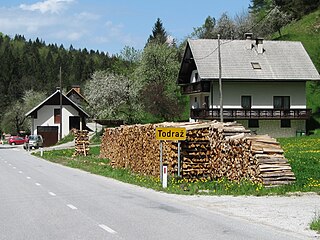
Todraž is a small settlement southeast of Gorenja Vas in the Municipality of Gorenja Vas–Poljane in the Upper Carniola region of Slovenia.
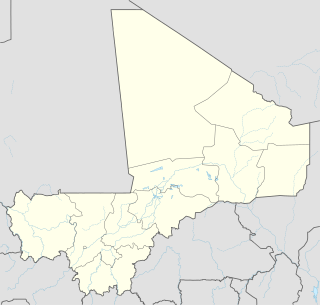
Sanso is a small town and commune in the Cercle of Bougouni in the Sikasso Region of south-western Mali. In 2009 the commune had a population of 22,284.
Bagdad is a former settlement and mining camp in Butte County, California, United States. It was located on the Feather River 2 miles (3.2 km) downstream from Oroville. Gold was discovered at Bagdad by A.G. Simpson.

Joe Walker Town is a former settlement in Kern County, California. It was located in the Walker Basin near Joe Walker Mine. The place was named after Joe Walker.

Qullissat is a former settlement in the Qaasuitsup municipality in western Greenland. It was a coal mining town founded to exploit the national resources of Disko Island. The mines operated for 48 years until 1972, when the economic base of the settlement collapsed, leading to its abandonment.

Kanižarica is a settlement southwest of the town of Črnomelj in the White Carniola area of southeastern Slovenia. The area is part of the traditional region of Lower Carniola and is now included in the Southeast Slovenia Statistical Region.

Sweetland is a former settlement in Nevada County, California. Located approximately 20 mi (32 km) east of Marysville, It is situated at an elevation of 1,857 ft (566 m) above sea level.
Chahar Gonbad Rural District is a rural district (dehestan) in the Central District of Sirjan County, Kerman Province, Iran. At the 2006 census, its population was 2,564, in 655 families. The rural district has 81 villages. It also contains many Copper and Metal mines, first Metal Mine is located near Bolboli village. And the biggest Copper mine is located near Takht. The name of the mine company is Takhtgonbad Copper Mine and it is 80 km from Sirjan.

Milligan is an abandoned settlement in San Bernardino County, California.
















